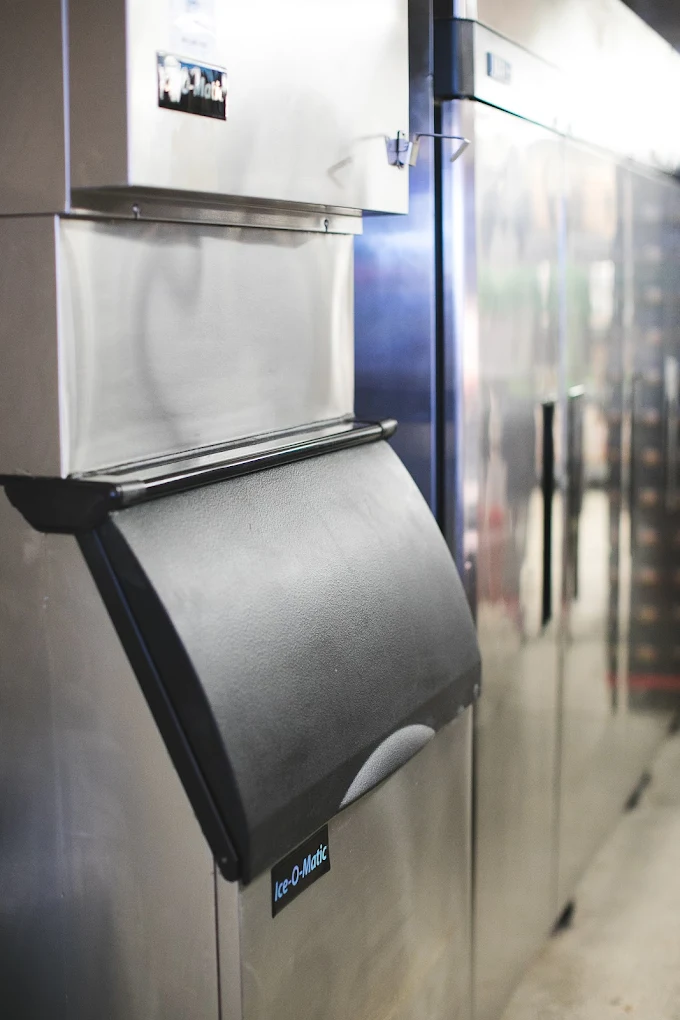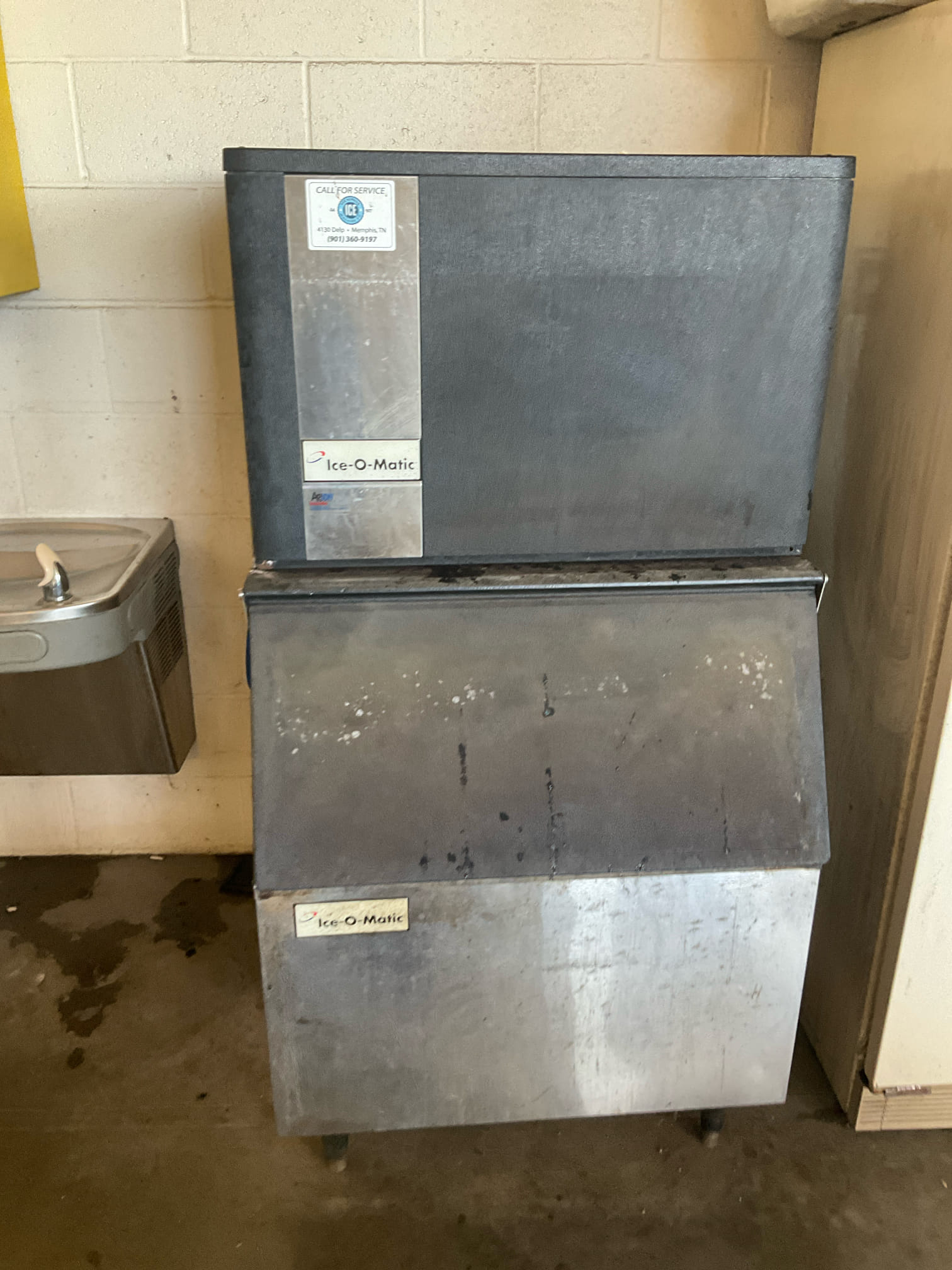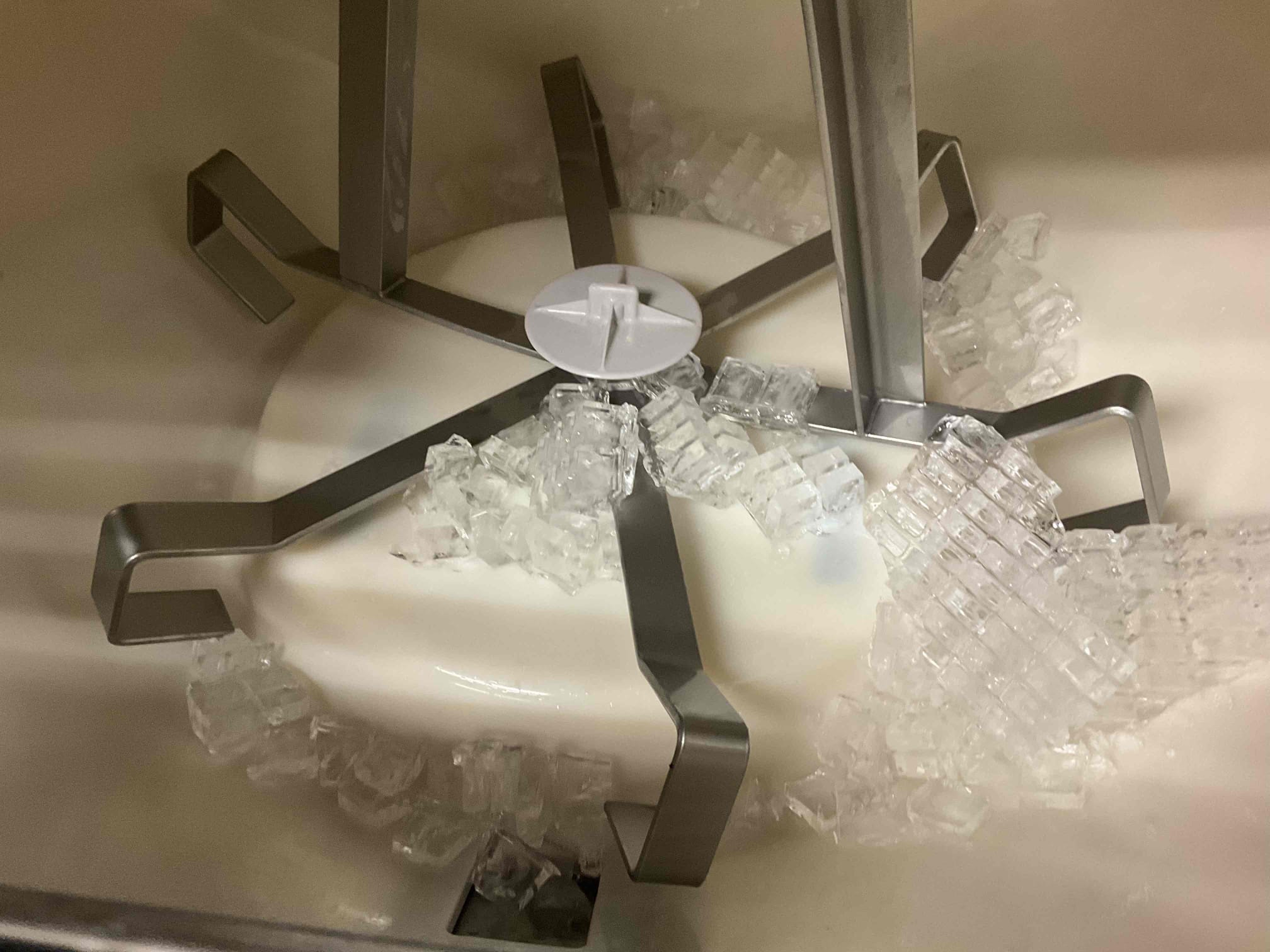proudly serving
the mid-south

Preventing Mold in Ice Machines: Tips for a Clean and Safe Ice Supply
Mold in your ice machine isn’t just a messy problem—it can affect the taste and safety of the ice you serve. Keeping your ice machine clean and free of mold protects your business and your customers.
Regular cleaning and maintenance stop slime, bacteria, and mold from building up inside the machine. You might not see the slime or mold at first, but it can grow quickly in damp, cold places like your commercial ice maker.
If left unchecked, mold can damage your equipment and lead to costly repairs. With proper care, you can keep your machine running smoothly and ice fresh.
Understanding Mold Growth in Ice Machines
Mold in your ice machine usually starts with moisture and dirt buildup. It feeds on organic material and can grow quickly if you don’t clean the machine regularly.
Knowing why and where mold grows helps you prevent it and protect your ice quality.
Common Causes of Mold
Mold grows when moisture stays inside the machine for too long. Melted ice or water left in the drain pan or ice bin creates a perfect damp spot.
If your machine’s drain clogs or the water filter is dirty, mold is more likely to grow. Poor ventilation, dust, and organic debris like food or dirt falling inside also contribute.
Even the ice dispenser chute can collect moisture and dust, helping mold thrive. Regular cleaning and maintenance reduce these risks.
Types of Mold Found
Mold in ice machines often appears as black, green, or gray slime-like patches. These molds grow on wet surfaces inside the ice bin, around water lines, and inside the machine’s drain.
Common types include Cladosporium and Aspergillus. Some molds produce allergens or irritants, which can be a health concern.
Health Risks Associated with Mold
Mold in your ice machine can make ice unsafe to use. It can cause allergic reactions like sneezing, skin irritation, or eye discomfort in sensitive individuals.
In rare cases, mold spores can lead to respiratory issues if inhaled. For food businesses, serving ice with mold risks customer health and damages your reputation.
Signs of Mold Contamination
Knowing when your ice machine has mold is key to stopping it early. You’ll notice changes you can see, smell, and taste.
Visual Indicators
Mold often shows up as slimy buildup inside the ice bin or on the ice itself. It can look white, green, or black.
Another common place to find mold is around the ice dispenser chute. You might see residue or dark spots where moisture collects.
Slime or mineral buildup may also appear, which can hide mold growth. Check wiring and water lines closely for signs of mold.
Odor and Taste Changes
If your ice starts to smell musty or like mildew, mold is likely growing inside the machine. This odor usually comes from mold spores or bacteria behind panels or in water lines.
Taste changes are another warning sign. Ice might taste bitter, sour, or just “off.”
These changes affect drinks and can hurt your customers’ experience. If you notice odd smells or tastes, it’s time for a thorough cleaning.
Impact on Ice Quality
Mold contamination changes ice quality. Ice may become cloudy or develop strange textures from slime or buildup.
These problems slow your machine down and reduce its efficiency. Poor ice quality also raises health concerns.
Regular checks of ice clarity and texture can signal when mold might be present.
Proper Cleaning and Sanitization Practices
Keeping your ice machine clean and sanitized stops mold from growing and keeps your ice fresh and safe to use. Setting a regular cleaning schedule, following a clear cleaning routine, and choosing the right cleaning agents are key.
Routine Cleaning Schedules
Set a regular cleaning schedule based on how often you use your ice machine. Busy places like restaurants might need cleaning every two weeks, while smaller offices might do it monthly.
Clean visible parts like the ice bin and dispenser daily if possible. Schedule deeper cleanings for all internal parts at least once a month.
Write down your cleaning dates and tasks to keep your team accountable. If your machine works nonstop, increase your cleaning frequency to prevent clogs and odors.
Step-By-Step Cleaning Process
Unplug your ice machine and empty all the ice. Remove parts like the ice bin and trays if your model allows it.
Wash these parts with warm, soapy water and rinse well. Clean the interior surfaces with a non-toxic cleaner or a solution made for ice machines.
Use a soft cloth or brush to reach corners. Clean water lines and ice-making components carefully.
Rinse everything thoroughly with clean water. Run the machine empty for a cycle to flush out leftover cleaning agents.
Sanitize the machine with a solution made for food contact surfaces, following the product instructions.
Selecting Safe Cleaning Agents
Use cleaning products that are safe for ice machines and approved for food contact surfaces. Choose agents that kill mold, bacteria, and slime but won’t damage your machine’s parts.
Avoid harsh chemicals like bleach unless the manufacturer suggests them. Instead, use commercial ice machine cleaners or natural sanitizers designed for these machines.
Check labels for clear instructions and safety warnings before use.
Moisture Control Strategies
Controlling moisture around your ice machine stops mold growth. Managing airflow, humidity, and water leaks keeps your machine clean and safe.
Improving Airflow Around Machines
Good airflow dries moisture before it settles. Leave a few inches of clearance on all sides of your ice machine.
Avoid blocking vents, fans, or air intakes with other equipment or storage items. Use fans if the room feels stuffy or humid.
Check that vents aren’t clogged and clean filters as needed.
Reducing Humidity Levels
Keep the room’s humidity between 30% and 50% if possible. Use dehumidifiers in damp areas, especially in basements or poorly ventilated spaces.
Seal windows and doors to prevent outside moisture from getting in. Watch for temperature differences that cause condensation inside or around your ice machine.
Addressing Water Leaks
Check hoses, drains, and water lines often for cracks or loose connections. Fix any leaks immediately to stop dripping water from pooling.
Make sure your ice machine’s drain is clean and working right. Clean spills quickly, and schedule regular inspections to find hidden leaks.
Regular Maintenance Tips
Keeping your ice machine clean and in good shape stops mold before it starts. Pay close attention to parts like filters, water lines, and key components.
Checking Filters and Water Lines
Check your machine’s filters and water lines for mold and dirt. Dirty filters block water flow and cause the machine to work harder.
Clean or replace filters regularly based on the manufacturer’s recommendations. Inspect water lines for cracks or leaks and clean mineral buildup as needed.
Keep a simple checklist:
- Replace filters every 3-6 months
- Inspect water lines monthly
- Clean mineral deposits as needed
Inspecting Ice Machine Components
Look at parts like the ice bin, gaskets, and evaporator plate. Mold often hides where moisture collects, such as door seals or drains.
Check gaskets for cracks or wear. Clean the ice bin frequently and wipe down surfaces with a food-safe sanitizer.
Check the evaporator plate for slime buildup and clean it promptly.
Keep these tips in mind:
- Wipe gaskets and seals every cleaning
- Sanitize ice bins weekly
- Inspect evaporator plate every month
Design Features to Prevent Mold
Smart design choices help keep mold out of your ice machine. Using the right materials and placing your machine thoughtfully lower moisture buildup.
Choosing Mold-Resistant Materials
Choose ice machines made with stainless steel or other non-porous metals. These materials don’t hold moisture or support mold growth.
Bins and surfaces should have smooth finishes to make cleaning easier. Some machines come with anti-microbial coatings on touchpoints.
Good seals and drain designs prevent water from pooling where mold likes to grow.
Ice Machine Placement Considerations
Place your ice machine in a dry, well-ventilated area away from heat sources like ovens or direct sunlight. Heat causes condensation that encourages mold.
Keep the machine away from dusty or humid corners. Make sure the machine has access to a working drain.
If possible, position the machine where it won’t be bumped or blocked. This helps keep vents clear and makes cleaning easier.
Staff Training and Best Practices
Train your staff to keep your ice machine clean and stop mold before it starts. Clear steps and strong knowledge help your team.
Developing Cleaning Checklists
A detailed cleaning checklist gives your team a clear plan. List what parts need cleaning and how often.
Use simple steps like:
- Turn off the machine before cleaning
- Remove ice and dispose of it
- Use approved sanitizers and follow the instructions
- Dry all parts fully before restarting
Post the checklist near the machine as a reminder. Update it based on the machine’s use and manufacturer advice.
Educating Team Members
Train your staff on why regular cleaning matters and how to spot early signs of mold like strange odors or slime buildup. Explain the risks mold poses to health and the machine’s performance.
Hold short training sessions or share quick guides with photos. Hands-on demos work best—show your team how to clean properly.
Encourage questions and give feedback to improve skills. When everyone understands their role, your ice machine stays cleaner and your business avoids health problems and costly repairs.
Monitoring and Record Keeping
Keeping track of your ice machine’s condition helps prevent mold. Set up a simple log to record each cleaning and maintenance session.
This log helps you stay on schedule and spot patterns if mold or slime start to show up. Use a checklist when you clean.
Include important steps like wiping surfaces, checking water filters, and inspecting drainage. Mark off completed tasks so nothing gets missed.
You can create a table like this to keep things clear:
| Date | Cleaning Done | Filter Checked | Mold Signs Found | Notes |
|---|---|---|---|---|
| 09/01/2025 | Yes | Yes | No | New filter installed |
| 09/15/2025 | Yes | No | No | Water pressure stable |
Check your ice machine often during busy times. Write down any unusual odors, tastes, or leaks right away.
The quicker you catch problems, the easier they are to fix. If you rent your ice machine or have it serviced, keep copies of those records too.
This complete history helps your technician care for your machine.
When to Call a Professional
If your ice machine shows signs of mold buildup despite regular cleaning, call a professional. Mold can hide deep inside, and experts have the right tools to remove it safely.
Watch for unusual smells or flavors in your ice. These can mean mold or bacteria are growing inside.
Loud noises, leaks, or a drop in ice production often point to issues that need a technician’s attention. If you notice slime or mineral buildup that won’t go away, a professional service can perform a deep cleaning and sanitization.
They can also check filters and water lines to prevent future problems. Here’s when calling a pro makes sense:
| Signs to Call a Pro | Why It Matters |
|---|---|
| Persistent bad odor or taste | Mold or bacteria affect ice quality |
| Strange noises or leaks | Possible mechanical or water issues |
| Visible slime or mineral buildup | Regular cleaning may not be enough |
| Ice machine isn’t making enough ice | Could signal clogs or hardware problems |
If you rely on your commercial ice machine daily, schedule routine professional maintenance to avoid these problems.
Frequently Asked Questions
Mold in your ice machine can affect the quality of ice and your equipment’s health. Knowing how to spot it, clean it, and stop it from coming back will help you keep your machine running safely.
How can I prevent mold from growing in my ice machine?
Regular cleaning and scheduled maintenance are important. Use proper cleaning products, clean removable parts, and sanitize the ice bin often.
Keep the machine dry when not in use. Control the temperature inside the storage area.
What are the potential health risks associated with mold in ice machines?
Mold can carry bacteria and harmful germs that may cause illness. Consuming ice from a moldy machine could lead to stomach issues, allergies, or respiratory problems, especially for people with sensitive immune systems.
Are there specific symptoms that indicate the presence of mold in an ice maker?
You might notice a strange taste or smell in the ice. The machine may also produce slime buildup or discoloration inside the bin or dispenser area.
Unusual noises or slower ice production could signal a problem.
What’s the best way to clean mold out of an ice maker?
Turn off the machine and unplug it first. Remove all parts you can take out, then clean them with a commercial ice machine cleaner or a vinegar solution.
Use a soft brush to scrub inside the bin and dispenser. Rinse everything thoroughly before restarting.
Why does pink mold appear in ice machines and how can it be prevented?
Pink mold is actually a type of bacteria that thrives in wet, warm places. To prevent it, keep your machine and storage areas dry and clean.
Regular sanitizing and good airflow around the machine also help stop this growth.
Is it common to find mold in ice machines, and what steps can be taken to avoid it?
Yes, mold often grows in ice machines if you do not clean them regularly.
You can avoid mold by following a maintenance schedule.
Use approved cleaning products and store ice properly.
Check for slime or bad smells often to catch problems early.
Recent News

Why Restaurants Should Have Backup Cooling Solutions for Smooth Kitchen Operations

Why Routine Inspections Prevent Refrigeration Emergencies and Save You Time and Money

Why So Many Local Industries Trust Memphis Ice for Reliable Ice and Refrigeration Service and Friendly Support

Cooling Equipment for Event Season Tips to Stay Comfortable and Cool

Common Ice Machine Rental Questions Answered With Friendly Tips

Commercial Freezer Replacement Specialists Helping You Upgrade Efficiently



